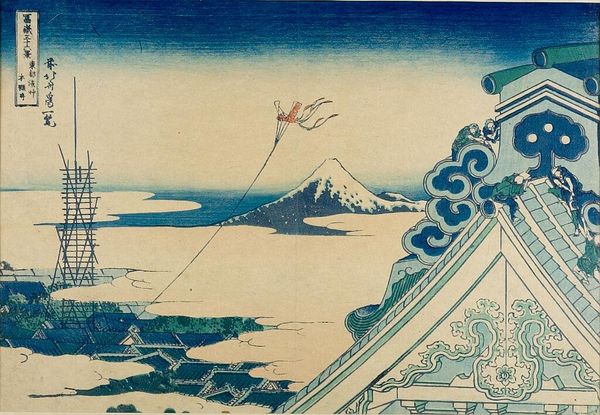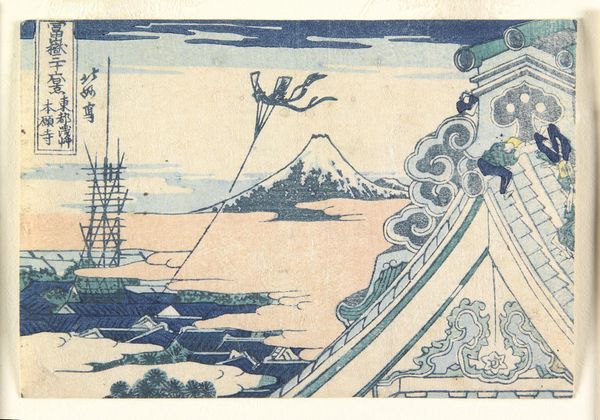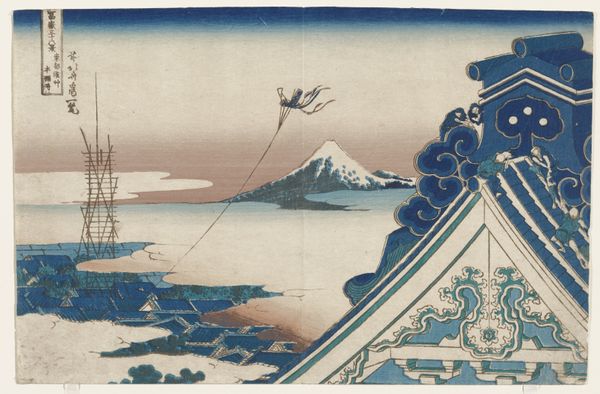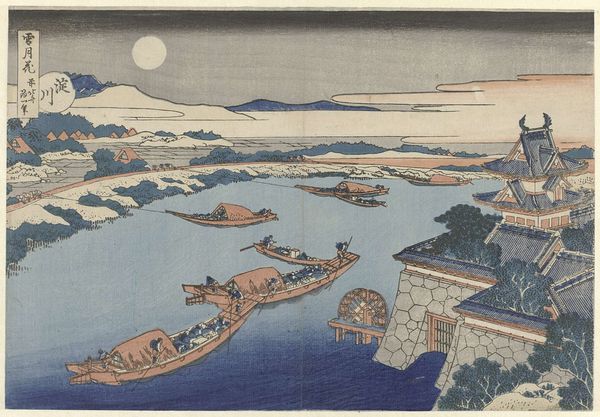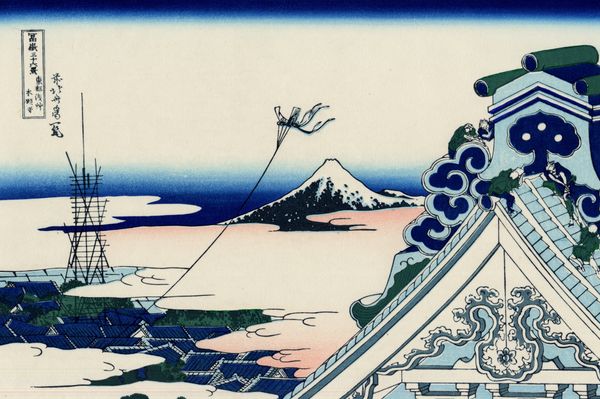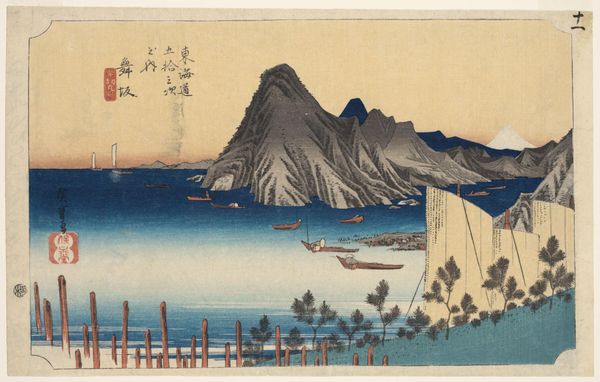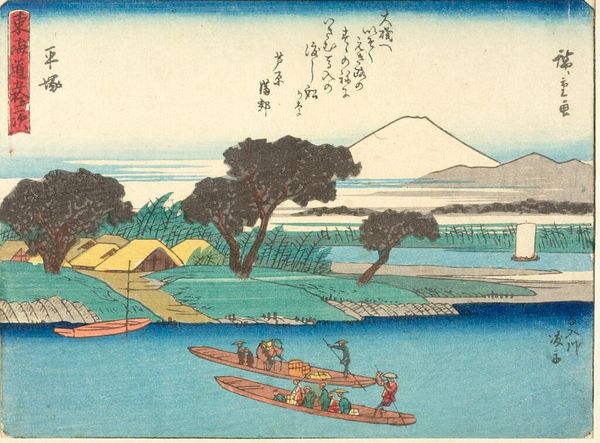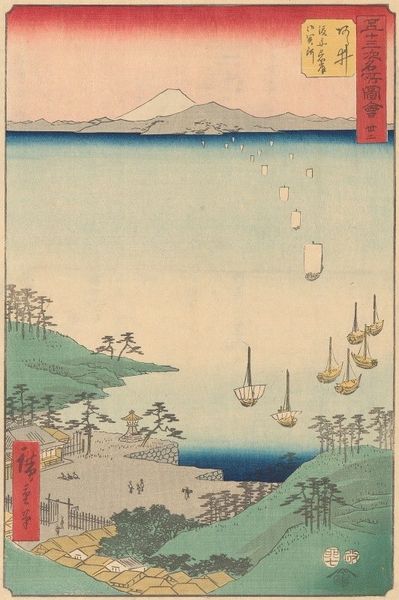
Hongan-ji Temple at Asakusa in Edo (TÅto Asakusa Hongan-ji), from the series Thirty-Six Views of Mount Fuji (Fugaku sanjÅ«rokkei) c. 1831
0:00
0:00
Dimensions: 24.8 x 36.2 cm (9 3/4 x 14 1/4 in.)
Copyright: CC0 1.0
Editor: This is Hokusai’s woodblock print, Hongan-ji Temple at Asakusa in Edo, from his Thirty-Six Views of Mount Fuji series. The temple roof dominates the foreground, and I’m struck by the contrast between the ordinary people working on the roof, and the iconic, distant Mount Fuji. What statement do you think Hokusai is trying to make here? Curator: I see Hokusai challenging established power structures. Fuji, a symbol of unchanging authority, is diminished by the vibrant, chaotic energy of Edo. Those figures on the roof, engaged in labor, represent the rising merchant class, subtly undermining the old order. What does this juxtaposition suggest about Japan at this time? Editor: It hints at a society in flux, a shifting of power from the traditional elite to the common people. Curator: Exactly. Hokusai isn’t just depicting a landscape; he’s capturing a pivotal moment of social and economic transformation. The kite, too, might symbolize aspiration, a reaching for something beyond the established norms. Editor: That's fascinating. I’ll definitely consider that perspective when I look at Hokusai’s work in the future. Curator: Remember, art is always in dialogue with its context.
Comments
No comments
Be the first to comment and join the conversation on the ultimate creative platform.
